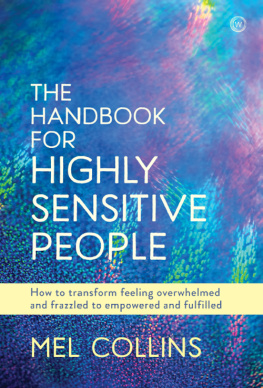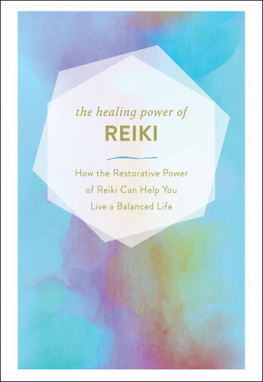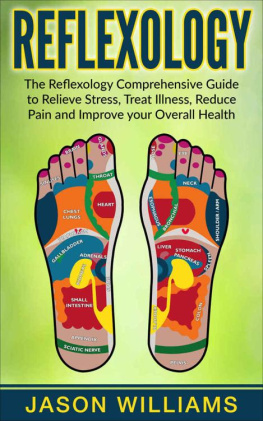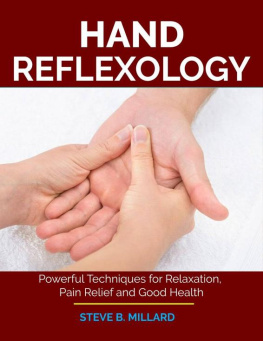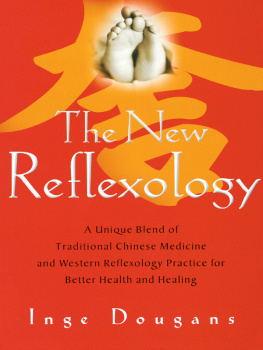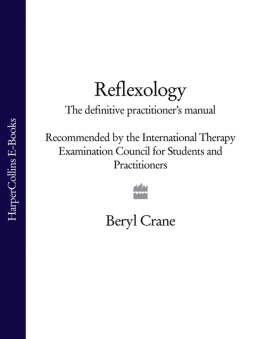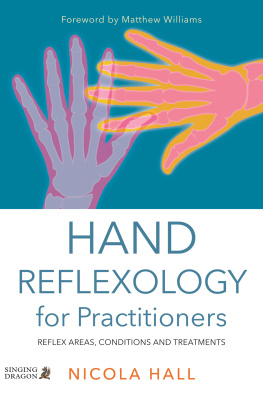Reflexology is increasing in popularity as more people turn towards natural forms of medicine. Now more than ever before, individuals are taking responsibility for their own health, and as well as becoming more conscious of healthy eating, exercising and relaxing, more and more people are trying out complementary therapies. People are also more worried than ever about the possible side-effects of the powerful medicines that their doctors are prescribing.
Of those people who turn to complementary therapies, some visit the doctor for a diagnosis of their problem and then decide to try a natural therapy before or in conjunction with a course of conventional medical treatment. However, a growing number of people are trying complementary therapy before visiting the doctor if their complaint does not seem too serious. It must be stressed, though, that the responsible reflexology practitioner will not discourage patients from seeing their doctor, and there will always be times when it is essential to do so.
With the increased popularity of the method there are occasions on which reflexology is available from the NHS, but in general the treatment is provided by private practitioners.
RECOGNISING IMBALANCES
When a part of the body is not working to full efficiency, a tender area will be found in the corresponding part of the foot when pressure is applied to it. By working this area over a period of time, the tenderness should reduce as the part of the body begins to function correctly again.
Reflexology involves treating the body by applying massage to reflex areas found in the feet and hands. It is more common for the feet to be worked on than the hands. Self treatment is possible, but caution should be exercised in this case. Beginners should not attempt self treatment if they have a serious condition which might be aggravated by it. That said, provided you are fairly flexible and can reach your feet, it should be possible to see the different areas of the feet and apply pressure to them with the thumbs and fingers. By referring to the reflexology chart, you can identify which areas of the foot relate to particular areas of the body.
The feet reflect the whole body, with different areas of the feet corresponding to all the parts of the body. The right foot corresponds to the right side of the body and the left foot to the left side.
Ideally with reflexology, a full treatment is always given to all of the areas in the feet, thus treating the whole body. This allows not just one symptom to be treated but the causes of that symptom too. It also means that a number of different symptoms can be addressed in a single treatment.
Common mistakes with self-treatment are working too heavily on the different areas and working for too long on them.
Holistic Approach
By covering all the reflex areas, the treatment will be holistic, which is the concept behind nearly all of the complementary therapies. To apply a holistic approach is to treat the body as a whole. This means treating not just on a physical level but also on an emotional and even a spiritual level. The effects of reflexology can be far-reaching.
Although it is possible to give treatment to isolated parts of the foot, the best results will be achieved when a full treatment is given to both feet. Although the method sounds simple, the results can be striking and, as the following should show, reflexology is much more than toe tickling.
The History and Theory of the Method
ANCIENT CHINA
Reflexology is not a new therapy. It is generally agreed that its origins lie in ancient China. Methods such as acupuncture and various pressure therapies have been practised in China for thousands of years, and a Chinese medical book attributed to Hwang Ti, who died in 2598 BC, contained information on the examining foot method. There is also evidence to suggest that in AD 1017 a Dr Wang Wei treated the sick by sticking needles into important acupuncture points on the body and then applying deep pressure therapy to the soles of their feet, before concentrating pressure on the big toe.
ANCIENT EGYPT
Early evidence of a method similar to present-day reflexology is found in a tomb drawing at Saqqara in Egypt. The tomb, dated 2500 BC, is that of Ankhmahor, a highly respected physician. It includes six wall drawings, one of which shows four men. One man is applying pressure with his hand to the foot of another, and a third man is applying pressure with his hand to the hand of a fourth. Above the men, the hieroglyphics show the patient saying Do not let it be painful and the practitioner replying I do as you please. It is thought that the method spread from Egypt to Greece, Arabia and then to Europe.
THE REFLEXOLOGY OF INDIA AND THE NORTH AMERICAN INDIANS
It is also known that a method similar to reflexology was used in India more than 5000 years ago. In addition, ancient footprint carvings and paintings have been identified that clearly show the soles of the feet with symbols on different parts of the foot relating to different parts of the body.
It is also known that North American Indian tribes have used foot therapy, although no written evidence exists. Cherokee Indians have told of their people using reflexology as a healing method, and of how this method has been passed down from generation to generation.
MODERN REFLEXOLOGY AND ZONE THERAPY
Modern-day reflexology was developed from a method known as zone therapy. This was first described in 1917 by an American ear, nose and throat consultant called Dr William Fitzgerald. It is thought that he came across the method while studying in Europe. Fitzgerald found that if he applied firm pressure to particular areas in the nose, mouth, throat and tongue, sensations could be deadened in specific areas. More relevant to reflexology was his finding that pressure exerted on parts of the hands, feet or over the joints produced similar results and relief from pain elsewhere in the body. The first use he made of this was as a means of anaesthesia during treatment or even surgery.
The work of Dr Fitzgerald was developed further by another American, Dr Joe Shelby Riley, and it was through Dr Riley that Eunice Ingham, widely considered to be the pioneer of modern-day reflexology, was first introduced to zone therapy in the early 1930s. Eunice Ingham was the first to identify the feet as the main area to which pressure should be applied for pain-killing effect and to treat illnesses. She developed what was called the the Ingham Method of Compression Massage and was the first to call the method Reflexology. She was also the first to write a book on foot reflexology, which was called Stories the Feet Can Tell. This was first published in 1938 and was followed in 1951 by Stories the Feet Have Told.
DOREEN BAYLY AND THE BAYLY SCHOOL
The work of Eunice Ingham was first introduced to Great Britain in 1960 by Doreen Bayly. Mrs Bayly had met Eunice Ingham in America and studied with her before returning to Great Britain to practise and teach the method. Mrs Bayly did a tremendous amount of work in introducing reflexology in Great Britain at a time when complementary therapies were not so popular. She also taught many students in Europe and her teachings are continued by the Bayly School of Reflexology.
As treatment by reflexology has become more accepted, offshoots of the original approach have now developed. Variations in the pressure used, such as with light touch reflexology and, at the other extreme, a very heavy pressure with advanced reflexology techniques, have been introduced together with precision reflexology and vertical reflex therapy. Reflexology involves treatment to the feet and sometimes the hands, but some practitioners now also practise a method called ear reflexology. The different approaches each have something to offer, but the basics should be learnt first.




